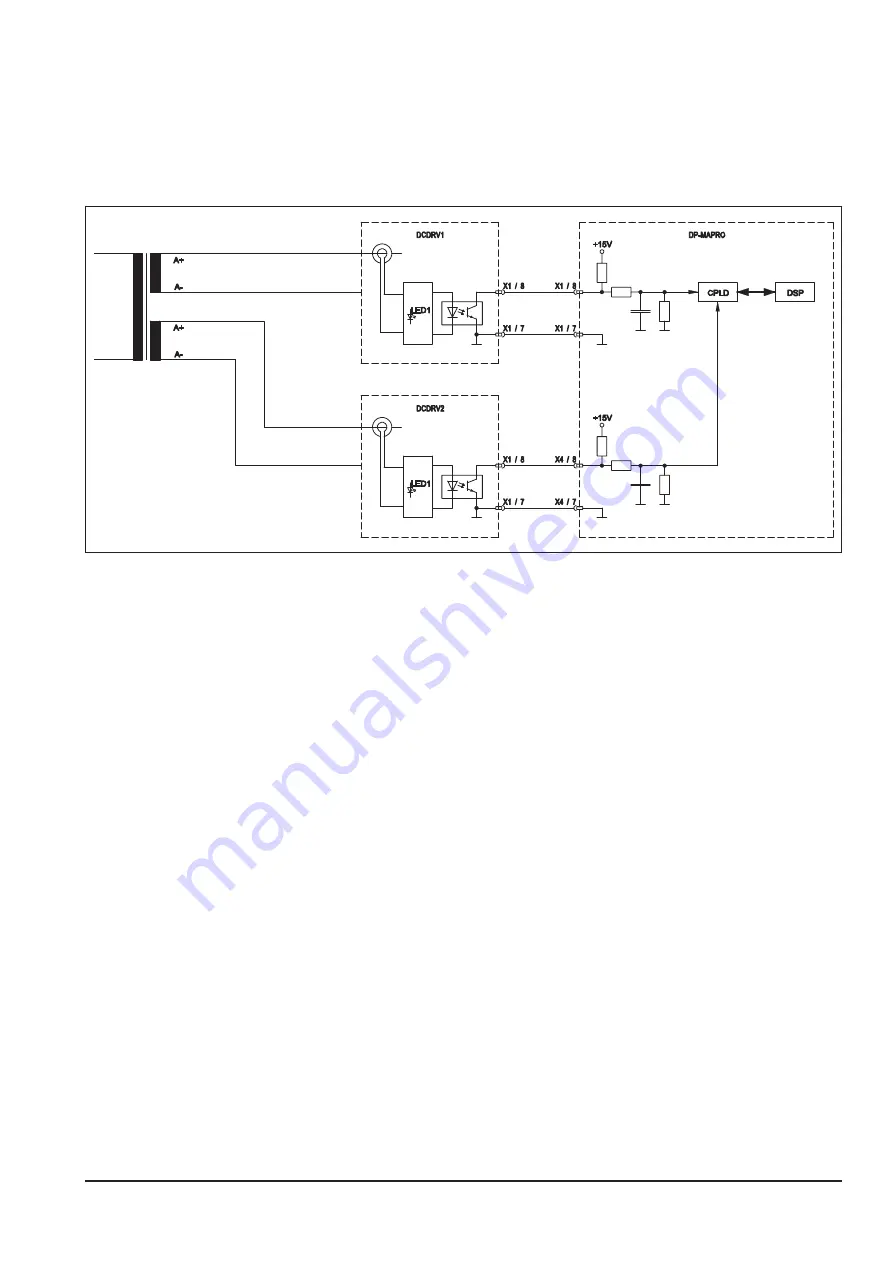
page 33
Monitoring primary current
The input current of the power units is monitored at the DCDRV pcb. The current is measured with an internal
current sensor, located on the pcb.As soon as the current is exceeding the maximum value, the CPLD (= Complex
Programmable Logic Device) shuts down the power unit immediately. At the 400SP and 500SP, the weld energy is
generated with two power units at the same time. The 320SP has only one power unit.
Schematic
If power unit 1 draws too much current, the machine will stop and displays
E16
(primary overcurrent protection1).
If power unit 2 draws too much current, the machine will stop and displays
E24
(primary overcurrent protection2).
For example:
E16
(primary overcurrent protection1)
possible reasons could be:
power unit 1 is broken (hardware defect, like broken MOSFET)
-
power unit 2 is not active (if driver signals for the second power unit are missing or the DCDRV pcb of power
-
unit 2 is malfunctioning)
In this case power unit 1 has to generate all the weld energy by itself. Which is possible to a certain amount of
power (200A to 250A) but beyond that, the unit will stop with
E16
malfunction at DCDRV pcb of power unit 1 (e.g. optocoupler output malfunction)
-
bad
fl
at ribbon cables between MAPRO pcb and power units
-
There is a simple way to
fi
nd out if the power unit itself is bad or not (only possible at 400SP or 500SP):
exchange the
fl
at ribbon cables at the MAPRO pcb against each other (connectors X1 and X4) so that power
unit 1 becomes power unit 2 and vice versa. If the machine now shuts down with
E24
(Overcurrent protection 2)
instead of
E16
, the power unit itself is faulty.
If the
E16
should still remain, it is very likely that the MAPRO pcb is faulty.
Summary of Contents for POWERMASTER 320SP
Page 1: ...Service Manual PowerMaster 320SP 400SP 500 SP 999 9997 9 97...
Page 38: ...page 38 Inside Diagram Diodes...
Page 39: ...page 39...
Page 40: ......








































